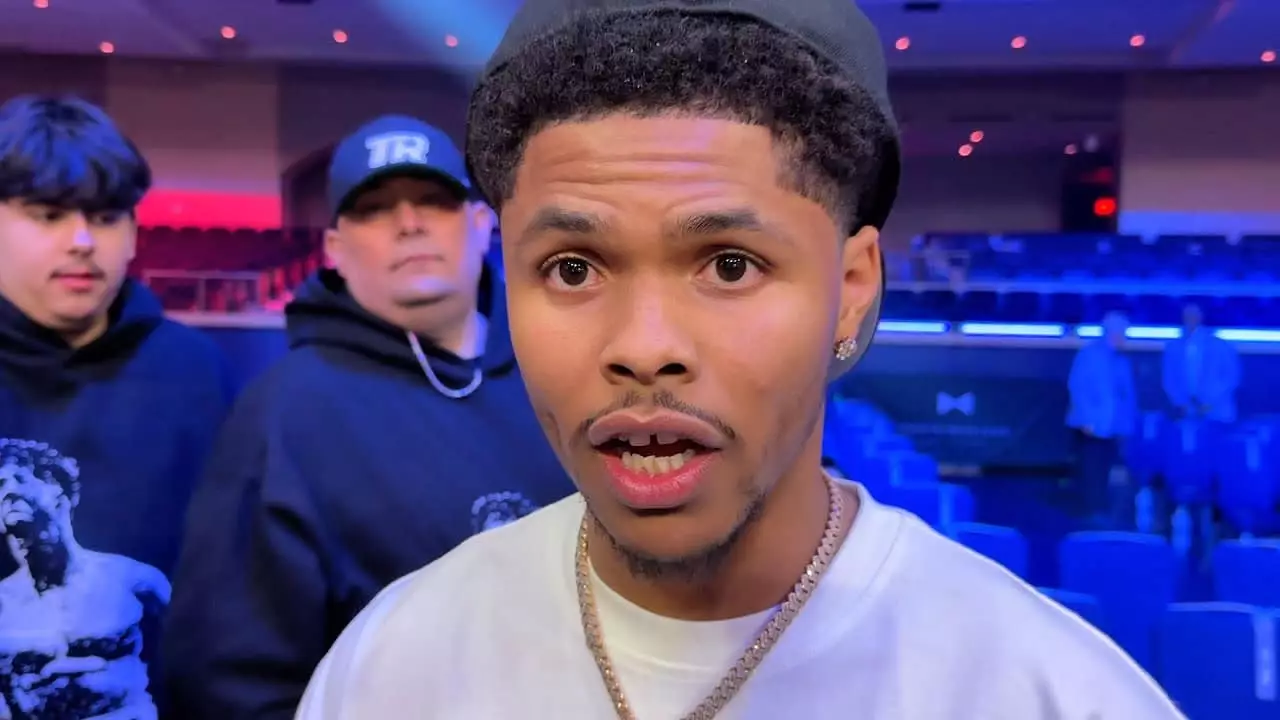In the high-stakes arena of professional boxing, one’s mental state is as critical as physical prowess. Gervonta “Tank” Davis’ recent bout against Lamont Roach on March 1st revealed a deep-seated contradiction between expectation and reality. More than just an underwhelming performance, Davis’ fight raised eyebrows and prompted discussions around mental engagement. Notably, Shakur Stevenson argued that Davis was, in fact, “the same fighter,” dismissing the notion that external distractions affected him. This assertion, however, demands scrutiny. Observers noted that during the bout, Davis seemed disoriented, glancing away from his opponent, which questions his focus and engagement in a sport where mental alertness can pivot the outcome of a fight.
Such a situation provokes conversation about whether Davis was merely distracted or if there was a deeper issue at play—something beyond the conventional pressures faced by elite athletes. It’s unsettling yet interesting to consider how personal lives and mental health crises seep into a ring where concentration is paramount. For fans and analysts alike, wrestling with this dichotomy is essential to understanding the layers of an athlete’s performance. We must ask ourselves: can we confidently say that Davis, under these circumstances, delivered his true capabilities?
Shakur Stevenson’s Perspective: Calculated Motivation or Pure Rivalry?
Stevenson’s comments inject a potent mixture of criticism and self-preservation. While he posits that Davis remains unchanged, one must consider Stevenson’s motivations. In boxing, frustration often leads to animosity, and many speculate that Stevenson’s framing of Davis stems from an eagerness to provoke a confrontation that has eluded him thus far. In the world of boxing, such sentiments are not merely competitive—they carry the weight of financial opportunities, drawing one’s gaze toward the goldmine that is a lucrative match-up with a mainstream star like Davis.
But the deeper question emerges: does Stevenson really view Tank as an unattainable fighter, or is he playing a calculated game to steer public perception? Critics suggest that Stevenson projects an image of confidence while hiding behind a shield of subpar competition himself. Fighting undercards and lesser-known opponents for the sake of preserving his record, Stevenson appears to be reshaping his own narrative rather than embracing the perilous yet rewarding road that comes with fighting top-tier talent.
The Weight of Expectations: Fans and Fighters Alike
Compelling performances often hinge on delivering thrilling bouts, something both Stevenson and Davis struggle to maintain in the current landscape. With fans desiring explosive, engaging fights, Stevenson’s insistence that Davis was fine contrasts sharply with the audience’s scrutiny. The fact that Davis took a knee in the ninth round and paused to call timeout suggested not just a tactical misjudgment but possibly a lack of engagement that fans found disappointing. When fans pay to witness what they perceive as a spectacle, moments of disengagement can lead to harsh rebuke and diminish an athlete’s allure.
Simultaneously, the pressures of being a public figure in the sport can exacerbate these already challenging dynamics. Stevenson, facing criticism for his own fighting style—a methodology often deemed ‘boring’—finds himself in a bind, caught between his own aspirations and the expectations of boxing enthusiasts. While he aims to carve a path towards a rendezvous with Davis, the reality of marketability looms large. Will fans rally behind a fighter whose appearances are characterized by safety-first tactics?
The Strategic Landscape of Boxing: Risk vs. Reward
Boxing today is as much about strategy outside the ring as it is about skill inside it. As Stevenson navigates his career, he faces choices that could either bolster his brand or limit future opportunities. His decision to face fighters like Josh Padley and Artem Harutyunyan rouses skepticism regarding his commitment to risking it all for greatness. Each fight that falls short of a cultural moment pushes him further from the spectacle that fans crave, and ultimately, it steers him away from the lucrative showdowns on the horizon.
Both fighters exist within a delicate balance where risk and reward dictate their futures. Stevenson needs to step outside his comfort zone and face worthy oppositions—ones that can elevate his profile and make an encounter with Davis inevitable. Conversely, Davis must reconcile the external turmoil in his life while seeking to maintain a dominant persona in the ring. The stakes have never been higher for both, yet the disparate routes they’re traversing may define their legacies in a sport that reveres the courageous and the audacious. Each choice reverberates through their careers, shaping the narratives we, as fans, consume and engage with deeply.

